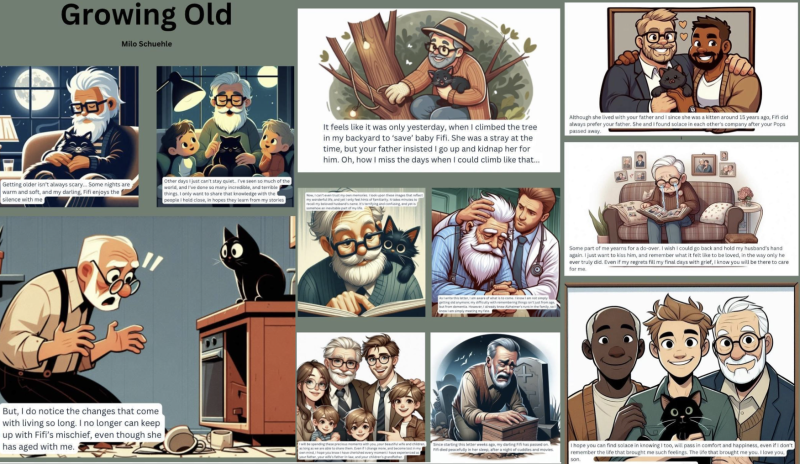Share this Story
Exploring the Intersection of Psychology, Art, and Artificial Intelligence
VWU professor and students to present paper at international conference
University News | June 14, 2024
Employing a blend of education, technology, and creativity, Virginia Wesleyan University Professor Dr. Shantanu Tilak has led his undergraduate PSY101 students to a significant academic achievement, having had their collaborative research paper, “Text-to-image AI as a mechanism for concept formation in the college psychology classroom,” accepted for review by the prestigious Journal of Sociocybernetics. Dr. Tilak and his students will present their work at the 18th Conference on Sociocybernetics on June 27 at the University of Krakow in Poland. 
The focus this presentation revolves around the innovative use of Artificial Intelligence (AI) to create comic strips as educational assignments in psychology. Dr. Tilak and his students have pioneered a method to employ text-to-image AI tools, such as Copilot, OpenArt, and Canva, to transform complex psychological concepts into accessible and engaging visual narratives.
Dr. Tilak explains, “The publication describes how one can use text-to-image AI to create storyboards or comic strips that describe scientific concepts in psychology as everyday concepts, and adopts a constructivist standpoint.” This approach treats both students and instructors as co-authors and research participants, fostering a radical participatory shift in psychological science.
The paper emphasizes the importance of intertextuality and multiliteracy in learning, encouraging students to seamlessly integrate various modes of artifact creation. Storyboard generation using AI becomes a powerful mediator, particularly for students who might lack confidence in their artistic abilities. The ethical considerations of using vast amounts of art and visual data to train AI models are also thoroughly examined.
The process followed by Dr. Tilak and his students is thoroughly outlined in their publication. They applied a three-part framework rooted in photography principles to provide specific, concrete directions to the AI tools. The collaborative effort involved students creating initial storyboard drafts, receiving feedback from Dr. Tilak, and refining their outputs. Eight students’ journeys are shared in the publication. This iterative process highlights both the potential and the limitations of AI in producing consistent and accurate visual narratives.
Dr. Tilak acknowledges the challenges faced, such as maintaining character consistency and the difficulty of generating images with text included in them. However, these obstacles provided valuable learning experiences, teaching students to navigate and troubleshoot AI tools effectively.
“AI can be an expedient collaborator for educational purposes,” Dr. Tilak notes, “but it may produce falsehoods and other output not meeting users' needs, requiring human agency to act in the shadows of a potentially biased computer algorithm.”
The collaborative nature of this project extends beyond AI-assisted storyboarding. Students were deeply involved in writing the results and methodology, developing a self-reflection rubric for the AI-mediated processes, and conducting several manuscript edits. They also played a crucial role in collating data for submission to the University’s Institutional Review Board (IRB), gaining invaluable research skills early in their academic careers.
Dr. Tilak reflects on the journey with his students, “It was truly amazing for them to buy into something this comprehensive without hesitation.” As Dr. Tilak and his students prepare to share their findings with an international audience, their work stands as a testament to the innovative spirit and collaborative ethos of the students and faculty at Virginia Wesleyan University. Their research not only advances the fields of education and psychology, but also exemplifies the transformative potential of integrating AI into educational practices.

